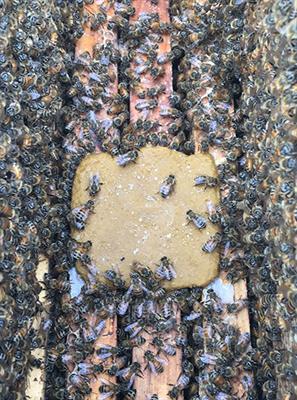
Global bee pollen patties are a very popular and convenient product that beekeepers use to feed their colonies. You can find them at many different beekeeping supply stores, as well as online. They are great for boosting the strength of your bees in the late summer months.
Contents
Feeding a second-tier product
A study conducted by Haydak and Tanquary in 1943 examined the efficacy of various pollen substitutes. Their findings suggest that although pollen substitutes can be beneficial to honeybees, there are still some limitations. The researchers found no advantage of a pollen substitute over natural pollen in terms of establishment or brood production.
In the present day, beekeepers use a variety of diets for their colonies, from dry powder to liquids to patties. They may place these supplemental foods in feeders connected to the hive body.
Pollen substitutes are often reconstituted with sugar syrup. It has been reported that the efficacy of a pollen substitute is dependent upon weather conditions, such as season and quality of pollen. Depending on the region, climate, and season, beekeepers can optimize their feeding practices using pollen substitutes.
There are several different recipes for a pollen sub, so beekeepers can find a suitable formulation. Some beekeepers even make their own recipes. But the most effective product is the one which best fits the needs of the hive.
Boosting colonies in late summer
When beekeepers are moving colonies, they may want to consider feeding their new bees pollen patties. These patties are designed to enhance brood production and honey production during the summer and fall. However, beekeepers need to make sure their colonies are strong enough to be moved. In addition to the effectiveness of pollen patties, beekeepers must also know how to feed their colonies correctly.
While boosting colonies with late summer patties can be a beneficial practice, beekeepers need to be careful. Some studies have shown that pollen substitutes can have harmful effects on bees and can actually harm their colonies.
A study by Fleming et al. found that bees fed Bee-Pro and MegaBee patties lost more queens than colonies that did not receive a pollen substitute. Moreover, bees fed with Bee-Pro and MegaBee showed higher rates of the Black queen cell virus.
However, another study conducted by Watkins de Jong et al., found that feeding a pollen substitute to a group of bees in a laboratory increased worker bees’ V. ceranae count in the spring and summer.
Building up strong winter bees
If your hive is struggling, you may need to supplement it with a patty. Pollen patties are a protein supplement that can help your hive grow plenty of young bees.
The patty should be placed near the brood nest and consumed by the nurse bees. A patty should last for at least a few weeks. In some cases, it can last for several months.
These are especially important in cold weather. Without the availability of honey or nectar, bees rely on the protein found in patties to keep their energy levels up. During the winter, the bees have no access to nectar, and a patty provides a readily available source of food.
During the winter, bees also collect pollen around the brood nest. When the nectar flow returns in the spring, bees can feed on the stored pollen.
In one experiment, researchers studied 400 colonies. Researchers fed different diets designed to replace natural pollen. They monitored the colonies’ size and Nosema level.
Avoiding unwanted swarms
Pollen patties are a management tool that beekeepers use to stimulate brood rearing. The protein content helps bees to have a balanced diet when they are unable to forage because of the weather.
They should be given to the colony as early as January. If you plan to move your colonies, it is essential to give them the pollen patties as soon as possible. However, feeding them in the fall can be harmful to the colony.
There are two types of patties available in the market. Besides the Global patties, you can also use pollen substitutes. These can contain about 40 percent of the protein found in natural pollen.
When you choose a pollen substitute, be sure to purchase high-quality varieties from trusted sources. You don’t want to end up with pollen subs that do not work for your hives.
Most patties are made up of a mixture of sugar, oil, and yeast. But a few patties are formulated specifically for the needs of bees.



